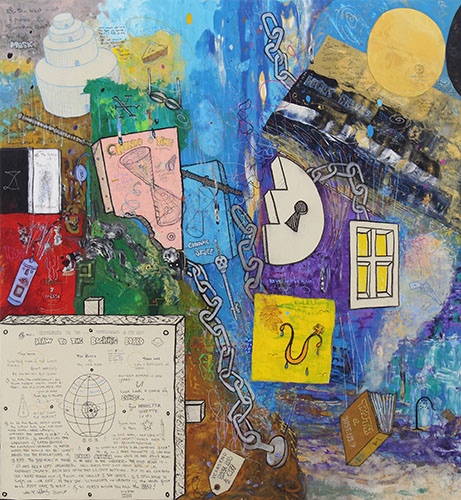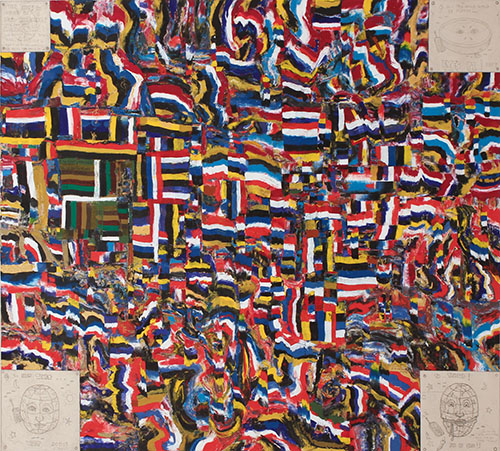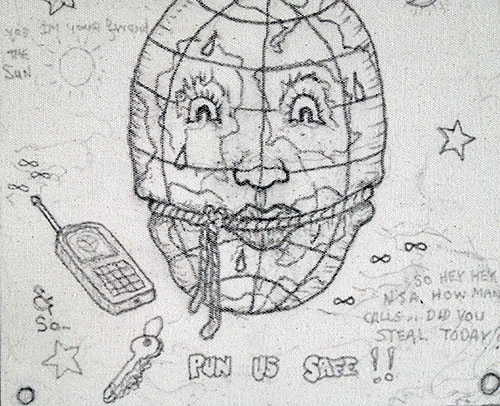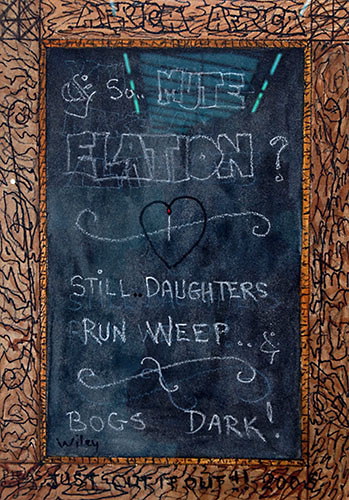by David M. Roth
 |
From the beginning of his career in the early ‘60s, William T. Wiley has kept viewers consistently intrigued and off balance with densely layered paintings and drawings that mix sharp-witted text and images in roughly equal measure. Newslate — the first substantive Wiley exhibition to hit SF since a 2009 career retrospective from the Smithsonian appeared at the Berkeley Art Museum — upholds all that we know about this trail-blazing artist. Among his enduring and most important contributions is the introduction of multiple, conflicting viewpoints in pictures that “argue” with themselves.
 |
Among the works that lean toward pure abstraction, From Trust to Trussed with Flagrants, about NSA spying, stands out. It’s a cross-shaped mass of writhing forms that Op-ishly alludes to the American flag, vastly distorted and laced with classic Wiley-isms. “Lord ½ Mercy. It’s a field of flag runts,” goes one pun. Gagged faces superimposed on a globe next to a cell phone and a key appear in the lower corners of the canvas. If we assess a work of art by the degree to which form and content align, this one — by pitting symbols of hegemonic power (Abstract Expressionism) against symbols of its demise (the NSA spying program) – scores a solid “10”. Wiley achieves nearly the same impact with a gestural work called Pre-Tsunami Abstraction with Migraines, about the Fukushima disaster, an event that carries personal significance for the artist since he grew up near Hanford Site, the nuclear facility in Washington state that supplied plutonium for the bomb dropped on Nagasaki. This charcoal/acrylic mix contains almost no text, only blowsy waveforms that suggest a ghoul-inhabited topographic map designed by Goya and Soutine. It has the texture of a tapestry.
 |
 |
Viewing Wiley’s work requires legwork, too: moving in close to read it, then backing away to measure the meaning of what you’ve read against the entire picture. It demands that we consider an infinite number of viewpoints and embrace contradictions – even nonsense. Unlike the canonical works of high Modernism that ask us to bow, as if before graven images, Wiley’s toss notions of authority out the window. His internal discussions come wrapped in the sardonic humor of bemused elder statesman. (“You can lead a critic to a wall, but you can’t make him think.”) They may make us laugh, but they mostly cast civilization in a harsh light.